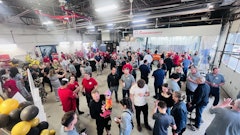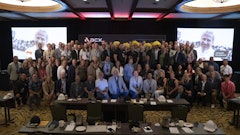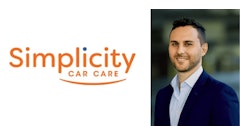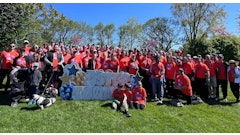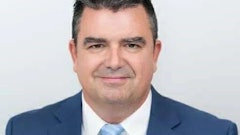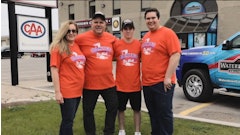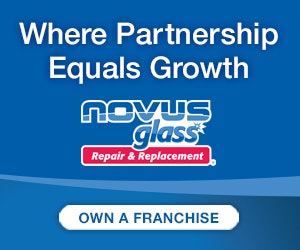
The rise of PDR
BY DAVID DICENZO

So he committed to using his own talents to change people’s minds about PDR. “We had to prove ourselves,” Serra says of how he and his crew began. “If we got a job from a dealership or a used car lot, we would repair a car for free just to show them what we could do. We slowly started making headway. “I did this trade scared, until I did it skilled.” Serra ultimately went West–and his PDR Canada in Sherwood Park, Alberta is now a fixture within the industry’s expanding landscape. It’s taken creative PDR experts like Serra time to establish themselves, in part because of the hesitation to acknowledge the benefits of the technique. PDR has several appealing characteristics– speed, efficiency, paint preservation, among others – though it took a long time for them to be embraced.
“PDR can be economical, quick, and a high-quality method for restoring a vehicle to its pre-damaged condition,” says Ricky Chin, Director of Hail Specialist, a Calgary company established in 2009 with temporary repair centres across the Prairies and into Ontario capable of up to 200 repairs a week at peak capacity. “It’s also very eco-friendly, with zero harm to our environment.
“The PDR techniques and tools today are phenomenal. We’re able to fix very complex dents, glue pull deeper dents, and fix large oil-can dents with all of the improvements over the last decade.”
The origins of the technique can be traced back to a gentleman named Frank T. Sargent, who wrote a book titled The Key to Metal Bumping in the 1930s. In 1960, Mercedes Benz staffer Oskar Flaig utilized PDR techniques to clean up cars at the International Sports Show in New York City, using a hammer handle to remove small dents in vehicles that occurred through the course of the day.
Over the decades, the number of tools used, and the creativity employed by technicians has grown. So did the frequency of weather events, which provided more opportunity. By 2000, Eastern Ontario-based company Autodentist was doing strictly PDR for car dealers and rental companies. Two years later, Doug Best joined as they opened a new venture, Canadian Hail Repair, which focused on smaller repairs that didn’t necessarily require trips to the collision repair facilities. Repairs that took weeks in traditional settings could be done in a matter of days. But PDR wasn’t entirely mainstream then and there was trepidation by both insurance companies and customers.
“We would use techniques that minimize the repair area of the vehicle,” says Best, Canadian Hail Repair’s VP and General Manager. “The businesses go hand-in-hand with used car dealerships and rental car companies. They are much more affordable repairs and much faster. “In the early 2000s, there weren’t a lot of hailstorms that affected Canada. But by the mid-2000s, there seemed to be more and more.” One hundred percent of the jobs done by Canadian Hail Repair are PDR. With employees based in Calgary and others able to travel the country, the company can respond to a location hit by hail and where repairs are needed within 24 hours. The core group has 10 staff members, though as many as 95 technicians have been utilized and deployed across Canada in a single hail season.

“It has to be within a frog’s hair,” says Serra, recalling the Vale test he and some of his employees took. “It’s just unbelievable. We were all sweating, but it was fun.
“In the end, job experience repairing the cars, and having your heart and soul in the game is what’s going to make you a good technician.” In addition to experience, PDR technicians need tools. Push and tap tools come in different shapes, lengths, diameters, and sharpness—and there’s definite artistry to using them.
“There is more tooling available to us and the inventors in the industry are constantly developing new ones,” says Serra. “The lighting is getting better and the tools are broader. We have sharp tips, shallow tips, wide tips, induction tools, and electric tools that help repair dents that were otherwise unrepairable.
“It’s not an easy trade to learn but the new tools help.” Now that PDR is a more established and trusted technique, the question is what’s next? Push and tap tools for PDR jobs come in different shapes, lengths, diameters, and sharpness—and there’s definite artistry to using them. In the 1990s, few were as passionate about paintless dent repair as PDR Canada President Domenic Serra.
“PDR can be economical, quick, and a high-quality method for restoring a vehicle to its pre-damaged condition,” says Ricky Chin, Director of Hail Specialist. “In the early 2000s, there weren’t a lot of hailstorms that affected Canada. But by the mid-2000s, there seemed to be more and more,” says Doug Best, Canadian Hail Repair’s VP and general manager.
Some traditional repair shops now have their own in-house technicians. And within the PDR realm, Glue Pull Repair is gaining popularity. “The next big uncharted territory in the PDR business is heavy-duty, collision glue-pulling,” says Best. “It’s far less invasive than some conventional repair methods. You pull damage from the outside and not welding pins onto the panel or disrupting the e-coat on the backside of the panel, which could possibly create a corrosion problem. It speeds up the conventional repair process, with less use of body fillers.
“We’re seeing a lot of licensed body techs using PDR to increase their speed and quality of the repair.” Chin sees PDR as a critical component of the collision repair industry going forward. “PDR saves the vehicle’s original paint job, saves the customer from long wait times, and it saves insurance companies money,” he says. “It’s very efficient for autobody technicians as PDR tools improve allowing push, tap, and glue-pull on a non-accessible area, either metal or aluminum.
“It’s turning the impossible into possible more often.”

In the 1990s, few were as passionate about paintless dent repair as PDR Canada President Domenic Serra.
“PDR can be economical, quick, and a high-quality method for restoring a vehicle to its pre-damaged condition,” says Ricky Chin, Director of Hail Specialist.
“In the early 2000s, there weren’t a lot of hailstorms that affected Canada. But by the mid-2000s, there seemed to be more and more,” says Doug Best, Canadian Hail Repair’s VP and general manager.




